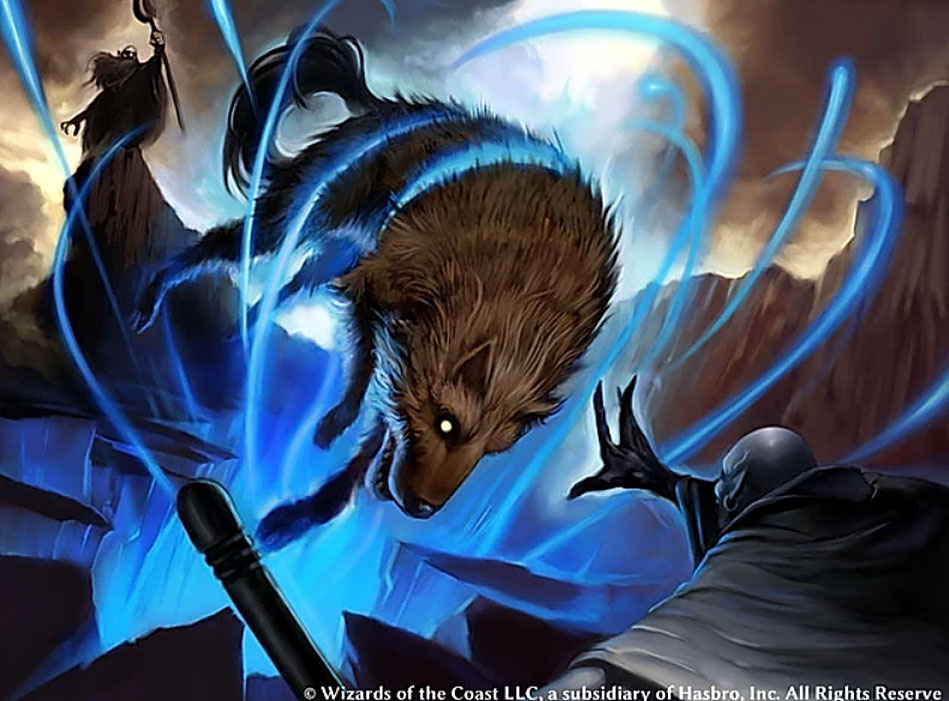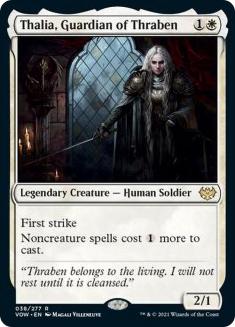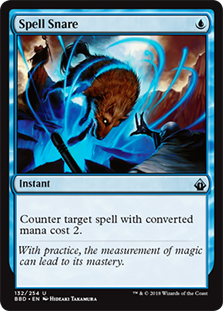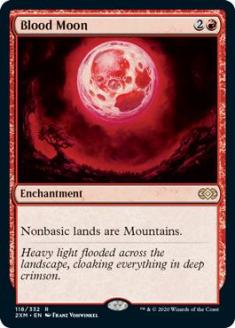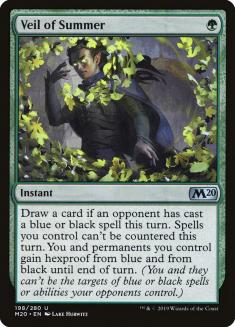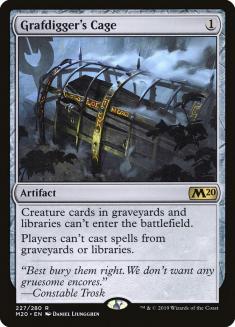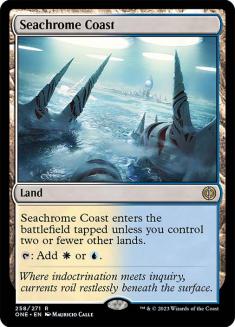Modern is in an interesting spot right now. There’s still innovation going on, and decks rising and falling on any given weekend, but how the decks look is rather established. Maybe you want to splash a color in your Hammer deck or maybe you’re smart, but there aren’t a lot of major decisions to make once you settle on a deck. We’ve had months to tune the established archetypes and they’re pretty well set as a result.
However, when that happens, a lot of players get misled by what I like to call deckbuilding inertia. When a deck does well in a tournament, that specific list immediately becomes the baseline for anyone looking to learn it. The same is true for an established archetype that’s tuned over several months. We can’t be experts in every single deck, and this is a convenient shortcut to take since we Magic players are often working with limited testing time.
But invariably, the reasons a deck is tuned a specific way stop being true at some point, as the metagame continues to evolve. Without a deep understanding of the deckbuilding options for a given archetype, it’s impossible to know when to deviate from the stock list. Moreover, you often get backlash when deviating from the hive mind which clings to that stock list as it’s established in their minds as the best. Even if you succeed with any innovations, many players are slow to adopt those changes, thus leading to stagnation in how lists are built. This is deckbuilding inertia.
Similarly, certain archetypes are dismissed as unviable, even if the reasons it receded from the metagame are no longer valid. These effects have taken over the current Modern metagame, leading to a metagame that’s still dynamic, but at a slower pace. And lost in all the hype over how Modern Horizons 2 has taken over the format are many cards that I think are being overlooked.
These are cards that have a pedigree in Modern, but for various reasons haven’t seen as much play recently. But there are compelling reasons that make them effective cards in the current metagame. I’ve selected eight of them to discuss today: one of each color, a multicolored card, an artifact, and a land. All my bases are covered! Let’s get into them.
1. Thalia, Guardian of Thraben
For as much noise as the color white has made this year in Modern, it’s been a rough go for the aggressive side of Magic’s most maligned color. An influx of cheap interaction, headlined by the power of Solitude and Fury, has made it much more difficult to get underneath midrange and control decks, and that’s what Thalia thrives on.
That said, it’s still one of the most powerful creatures ever printed, with a long history of success in every competitive format, and there’s only so much that spot removal can do to contain explosive aggressive draws. So while Solitude, Unholy Heat, and Prismatic Ending may have bolstered reactive strategies, it’s Fury that has made it the most difficult for them.
And the good news is that Fury is on the decline. Temur Crashcade isn’t nearly as popular as it has been, and the various Omnath, Locus of Creation decks are slowly trimming on the card as there aren’t a lot of common matchups where Fury consistently gives you value. We’ve seen Humans, the best home for Thalia, pop up in Challenge Top 8s recently, and I think there’s room to explore that archetype with Adeline, Resplendent Cathar, as well as more midrange white creature strategies with Stoneforge Mystic and Yorion, Sky Nomad.
2. Spell Snare
Izzet Midrange has been among the most successful decks in Modern this year, but its presence in the metagame has ebbed and flowed quite a bit. And if you take a big-picture look at the deck’s evolution, it’s clear that the curve has come down quite a bit. Archmage’s Charm was once a staple but is now more of a role-player, while you see more cheap cantrips and counterspells like Force of Negation and Spell Pierce.
But when it comes to cheap counterspells, Spell Snare is in a good position right now. There are plenty of two-mana spells around for it to counter, from Counterspell to Drown in the Loch to Terminate, but there are also plenty of creatures. Tarmogoyf; Kroxa, Titan of Death’s Hunger; Ice-Fang Coatl; Wall of Roots; Stoneforge Mystic; and Puresteel Paladin all come off the top of my head as common targets.
With how much velocity the Izzet Midrange decks have, I want to diversify my counter suite, especially because Spell Snare retains more value in the late-game than Spell Pierce while being among the best cards to have in your opening hand when on the draw. If your metagame is heavy on Teferi, Time Ravelers you’ll want to err towards Spell Pierce, but otherwise I like Snare.
3. Fatal Push
When Fatal Push debuted, it completely reshaped the landscape of Modern by shifting the balance of power amongst the five colors towards black. Black always featured Thoughtseize and Inquisition of Kozilek as the basis of its disruption suite, but needed to play with either red or white for Lightning Bolt or Path to Exile respectively in order to pair that discard with premier-level removal. With Fatal Push, that was no longer necessary, making it easier to play base-black midrange decks. Jund Midrange and Grixis Death’s Shadow were the top examples and dominated the format for months.
Well the balance of power has once again shifted back to red and white because of the addition of powerful removal in those colors, as well as the threats Ragavan, Nimble Pilferer and Dragon’s Rage Channeler in red. But much as the metagame eventually adjusted to the presence of Fatal Push with fewer Tarmogoyfs and redundant decks like Humans which powered through heavy discard to overload opponent’s removal, we’re seeing it adapt to the new reality. Phyrexian Crusader took down the recent Nerd Rage Gaming event, capitalizing on a complete dearth of Fatal Pushes in the metagame. A lack of Fatal Pushes is also part of why Golgari Yawgmoth and Hammer decks are performing well, since Push is the best answer to Yawgmoth as well as any creature equipped with a Colossus Hammer.
The time has come to reincorporate Fatal Push into your removal packages. It fills holes that Unholy Heat and Prismatic Ending have, which will only become more important as players look for hidden gems like Phyrexian Crusader. A few spread across your 75 will be enough to cover you in most games, and it’ll function like your other removal much of the time, trading for Ragavans and Stoneforge Mystics all the same.
The one matchup where Fatal Push represents a significant downgrade is control decks, where the versatility of Unholy Heat and Prismatic Ending turn an otherwise dead card into a functional one. So in control-heavy metagames I’d still look to eschew Fatal Push entirely or at least push them to the sideboard, but otherwise it’s still a maindeckable card in Modern.
4. Blood Moon
With so few big mana strategies around these days, as well as Lurrus of the Dream-Den forcing many players to cut all their three-mana permanents, Blood Moon isn’t nearly the same menace it has been in Modern’s history. But I think it’s ripe to take advantage of the current metagame for two reasons.
First is the number of utility lands around. Shutting off Inkmoth Nexus, Urza’s Saga, Horizon lands, etc. means Blood Moon is critical in shutting down your opponent’s key threats in several matchups. Alpine Moon can serve in this role for Lurrus decks, but it isn’t nearly as powerful of a card in general. And when it comes to Modern, I’m always looking for cards that can dominate a game.
Second is just how greedy players are getting with their mana right now. There are always a few basic lands to fetch for, but it’s hard to do so aggressively in most of these decks. Death’s Shadow needs to shock itself to set up its namesake card. Omnath decks are trying to curve Wrenn and Six into Teferi, Time Raveler while also playing double-colored cards of all four colors. And the control decks all have heavy blue requirements for Counterspell and Archmage’s Charm in addition to their white spells. With this kind of deckbuilding, Blood Moon won’t often completely shut your opponent out, but it will stop them from casting several spells, and that’s good enough.
With how prominent Lurrus is, it can be hard to find a home for Blood Moon, but I think this list from last weekend’s Showcase Challenge is a great start. In fact it’s rapidly picking up in popularity online:
Creatures (18)
Planeswalkers (3)
Lands (20)
Spells (19)

5. Veil of Summer
The decline in Fatal Push, and black removal in general, has unsurprisingly hurt Veil of Summer’s stock. Countering a removal spell to protect your position on the battlefield is among the best modes the card has, and losing it was a big blow to its versatility.
But the recent emergence of Grixis Death’s Shadow as a top strategy has gone a long way towards restoring that part of the card’s functionality. Even in lists without Fatal Push, you have Terminate, Kolaghan’s Command, and Drown in the Loch to target, and countering more expensive spells is even better than stopping a Push.
And beyond Grixis Death’s Shadow, there’s decks like Jund, Izzet, and Rakdos Midrange that have plenty of discard or counterspells for Veil to prey upon. As long as there are plenty of these lean midrange strategies around, Veil should be an automatic sideboard card for every green deck. It was for a while, but that status seems to have gone away in recent months. It’s time for it to return. There’s just no card that does what Veil of Summer does, completely swinging games with its unique ability to generate card advantage and tempo simultaneously and for such a low opportunity cost.
6. Fire // Ice
For as much nostalgia I have about this card, I wasn’t high on it when the reprint was announced earlier this year. I was wrong. Fire itself wouldn’t be a playable card, but it’s a serviceable removal spell that, because of Ice, is never dead and often does much more than a removal spell would. The cantrip helps you make land drops, tapping a land can help you fight through counterspells, and sometimes you use it aggressively to clear out a blocker. Fire // Ice is a Swiss Army knife of a card that always does something different but is always effective.
I’ve come away impressed with the card every time I’ve played it, and I’m surprised not to see it more often. It has its clear home in cascade decks since it doesn’t interfere with your ability to hit Crashing Footfalls or Living End, but those decks have declined recently. As for other homes, I’d be willing to try it in small numbers in Izzet Midrange or splash for it in Azorius Control, the latter of which was en vogue a few months ago but looks better again with the number of Ragavans and Dragon’s Rage Channelers around.
Of course, you also get to play it in Four-Color Indomitable Creativity, where it’s a staple. Unsurprisingly, I still like that deck quite a bit.
7. Grafdigger’s Cage
In a world where Urza’s Saga is so popular, you’d think Grafdigger’s Cage would be a common tutor target, at least in sideboards. But so many of the Saga decks also use Lurrus as a companion, and the nonbo has kept this piece of graveyard hate down, while asymmetric one-shot effects like Nihil Spellbomb and Soul-Guide Lantern take center stage.
That said, Grafdigger’s Cage is much better than those cards in the Golgari Yawgmoth matchup, where it not only shuts down every undying creature but also Chord of Calling and Eldritch Evolution, which are so important for setting up the deck’s engine. If this is a matchup that you’ve been struggling with, one copy in the sideboard is worth the dyssynergy with your companion. Same goes if you’re a Karn, the Great Creator deck.
If you’re worried about playing such a narrow sideboard card, note that Dredge has picked up a bit in recent weeks, finding success with a Life from the Loamless build featuring Otherworldly Gaze to provide added consistency. Cage also shuts down Indomitable Creativity and Esper Reanimator, so several other decks will pay you off, even if they aren’t that popular.
The main worry with playing a Cage over another piece of graveyard hate is Living End, but that deck has fallen off a cliff. I’ve always liked diversifying my graveyard hate in Modern since it makes playing around it more difficult for your opponent, so despite the nonbo with Lurrus, I’d like to see more singleton copies in sideboards.
8. Seachrome Coast
There are two reasons I’m closing this list with Seachrome Coast. One has to do with the card itself, while the second has more to do with fast lands in general.
For Seachrome Coast itself, it’s starting to pop up more in Azorius Urza decks that are utilizing Portable Hole and Esper Sentinel as powerful artifacts to build its synergies on. Ari Lax wrote earlier this week in support of these strategies, and I’m a fan of them as well. Any time you can make two cards that are powerful alone even better when they’re together, you have something promising. On top of that, these decks have plenty of card advantage, good disruption for the early-game, and a powerful combo to build towards as the game goes long.
In a Modern format that’s starting to slow down, Azorius Urza could easily provide a much-needed shake-up. It just needs one or two people to sit down with the deck and put some work in tuning it. Ari’s article highlights some of those players and I’m excited to see what they come up with.
As for fastlands in general, I’ve long thought they are among Modern’s most underrated lands. It’s critical to have access to your colors early so you don’t fall behind. The classic fetch-shock manabases are certainly the best at that, especially with the addition of Triomes, but come with a significant life cost. With how aggressive the midrange decks are these days, as well as Burn always hanging around, it pays to have a less painful manabase.
While everyone is looking to go over the top with Omnath decks that get to pack in as many powerful cards as possible, you can get the advantage by having smoother, painless mana by sticking to two or three colors. Azorius Urza does this quite effectively while still having a powerful plan, which is a big part of why I’m high on the archetype.
Regardless of your feelings on these eight cards, the main lesson you should take away is that it’s important to regularly question your understanding of a format. Lessons you learned months ago may need unlearning; even in times like now where Modern looks relatively the same, Magic is always changing. And the best players constantly stay on top of these changes and are willing to challenge their previous beliefs when that’s what the new conditions dictate.
When it comes to this game, the one universal rule is adapt or die.

